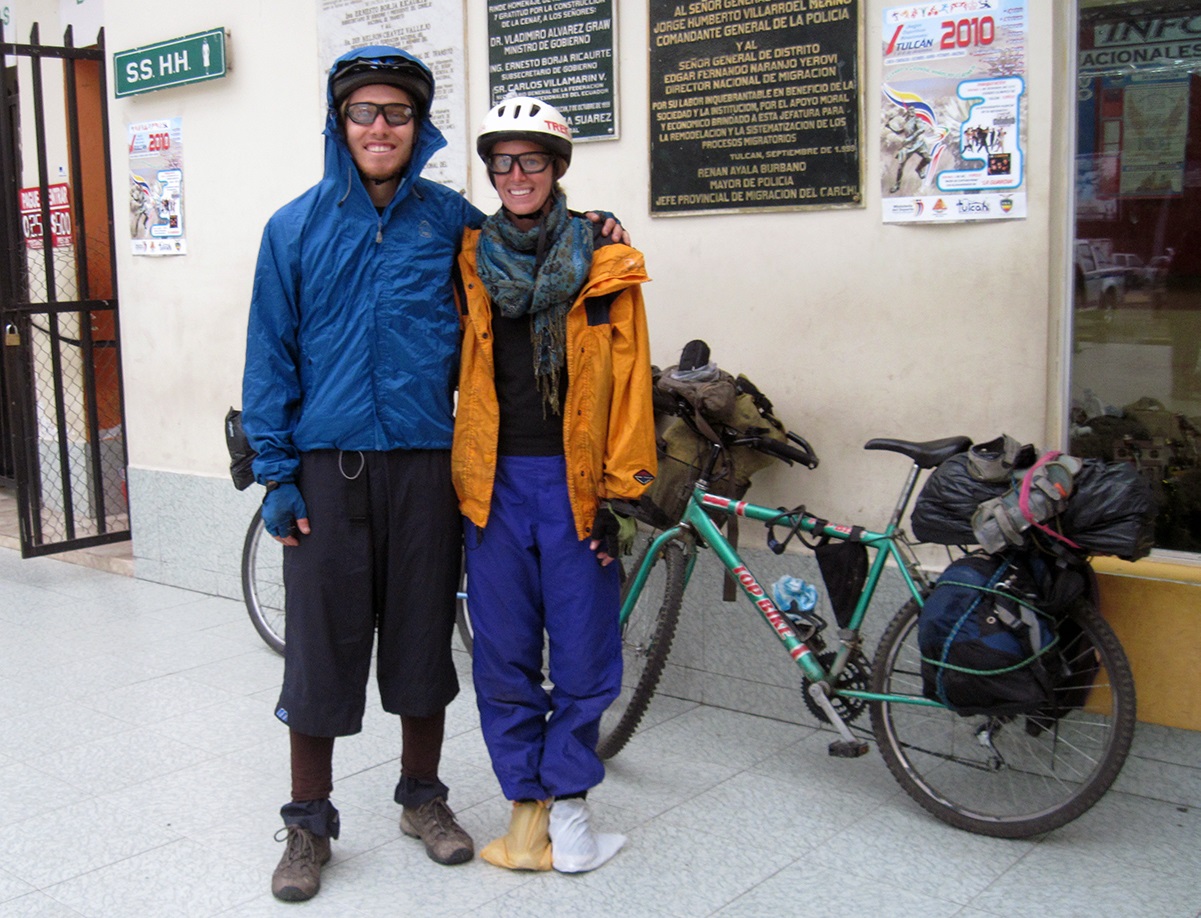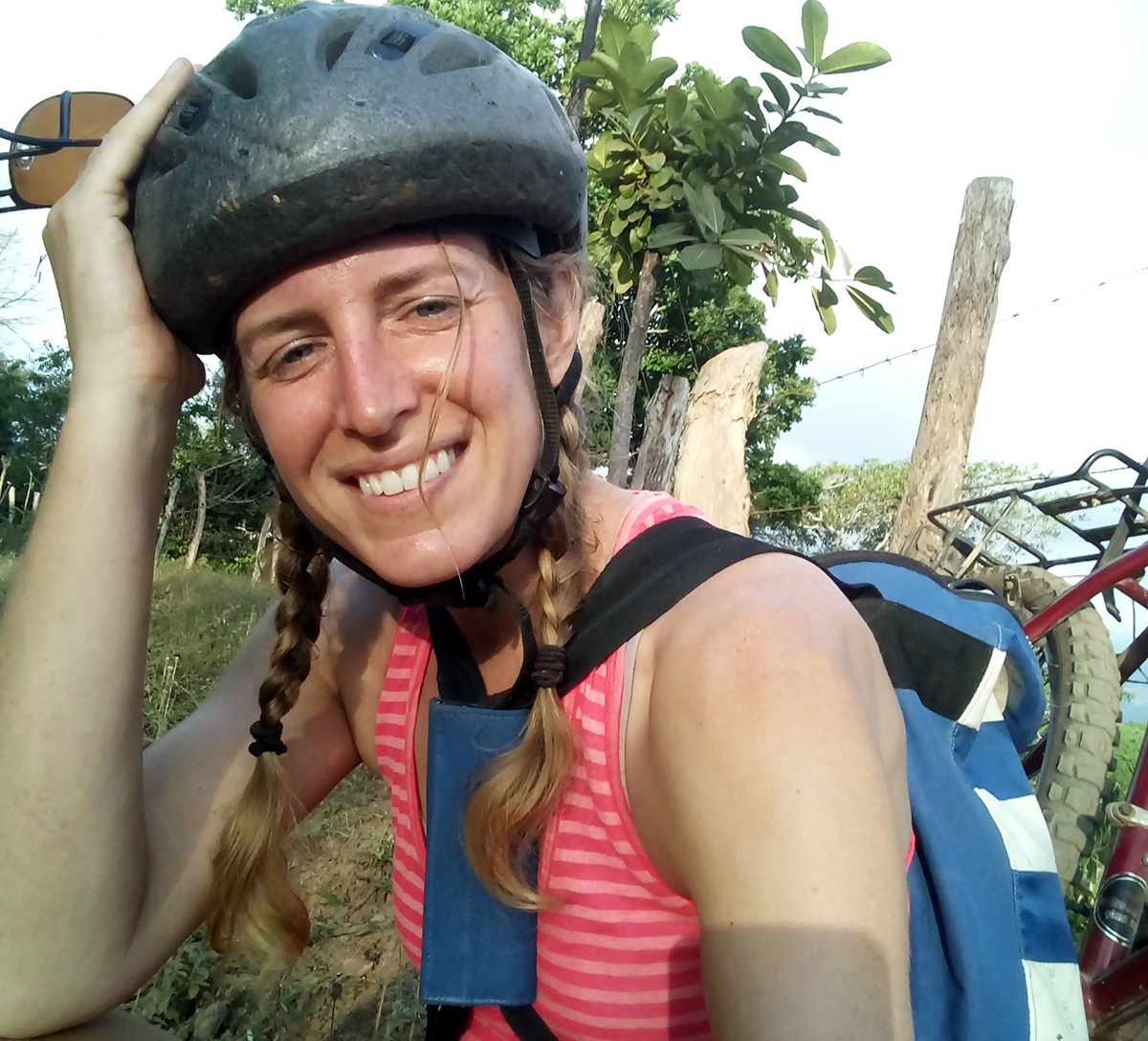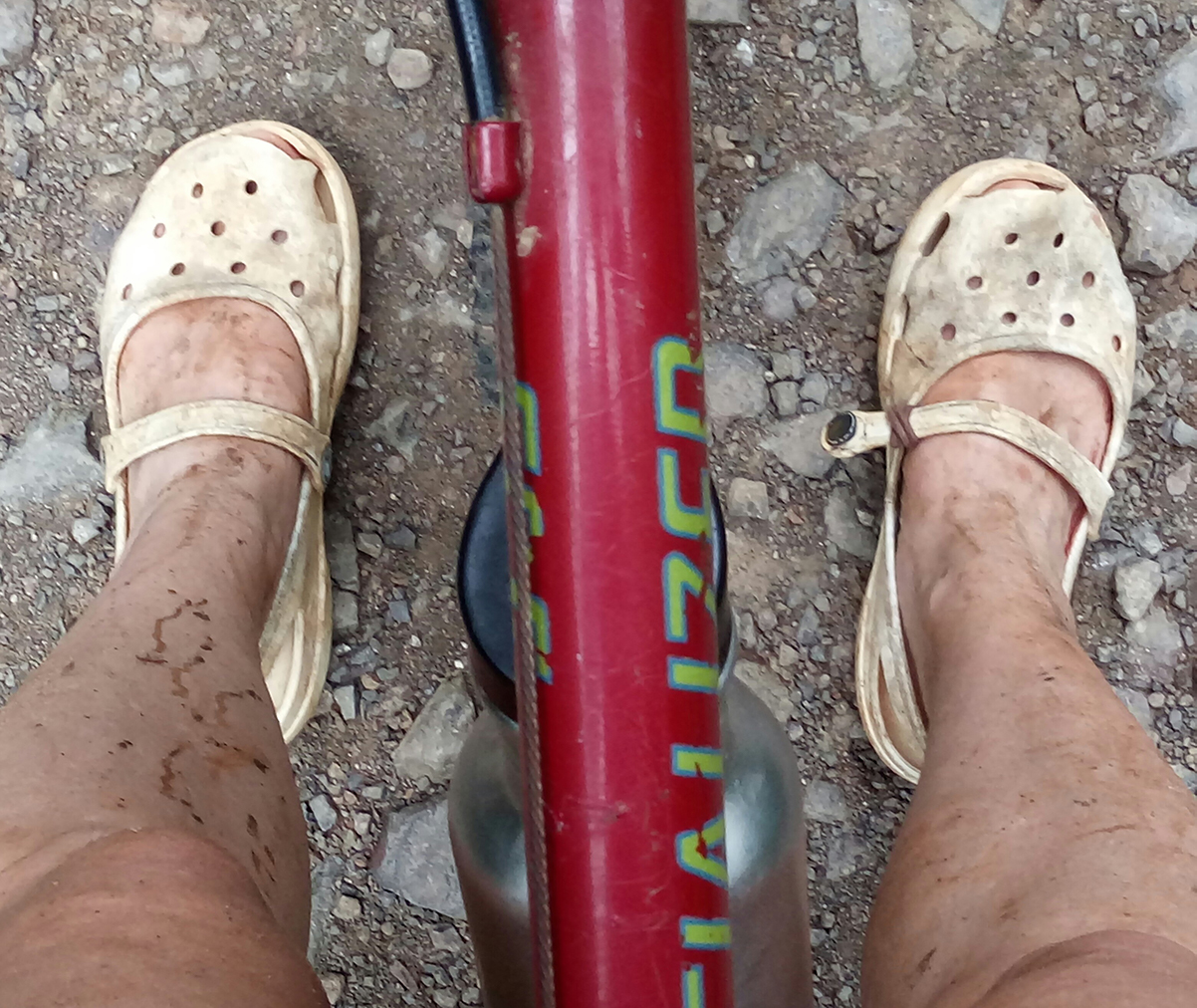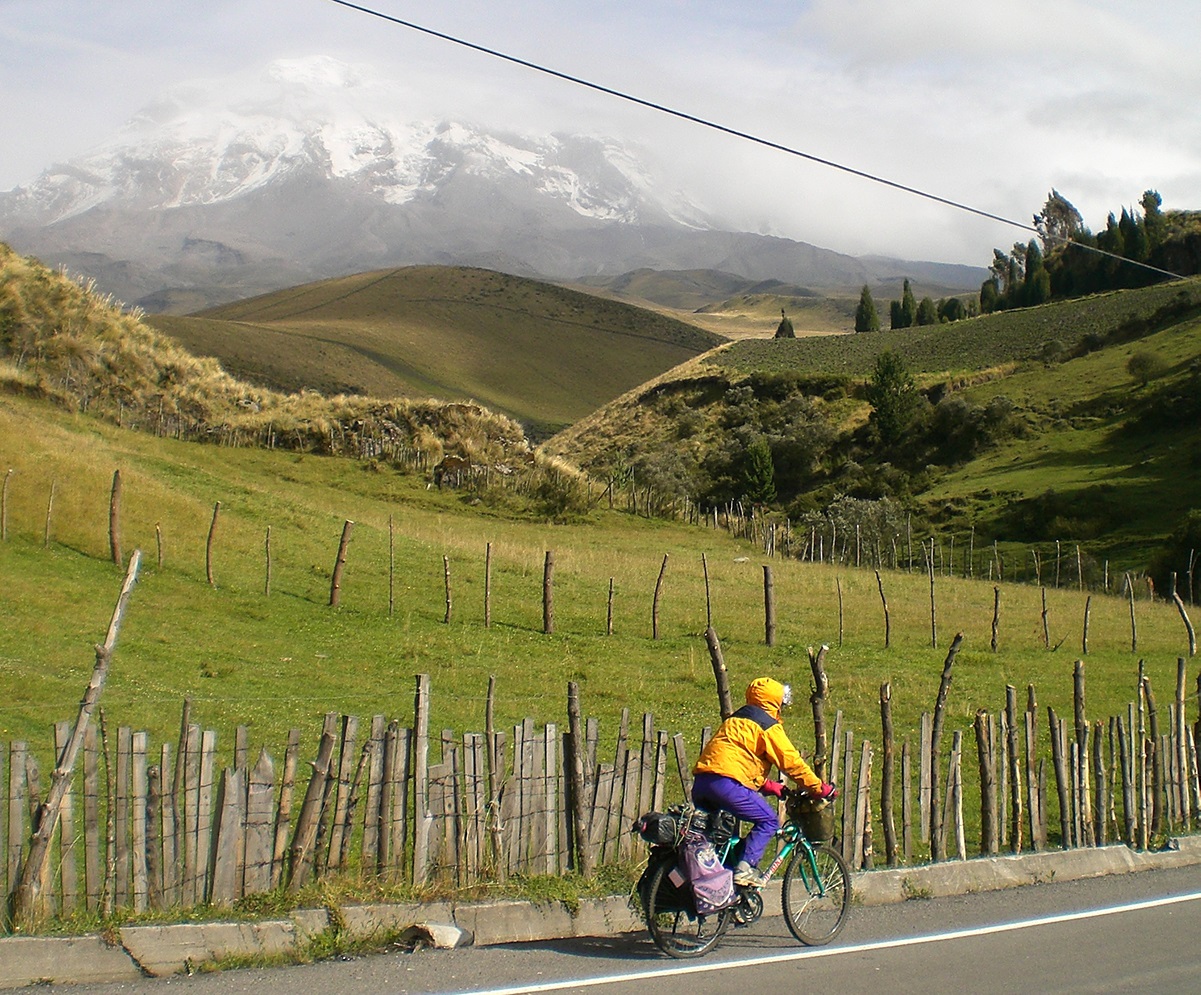Packing Hacks for an Inexpensive Tour
I got into adventure cycling before I got into the internet, and I did almost all my long rides without any electronics. No phone, no GPS, no iPod. I used paper maps and stopped at libraries to call home on Skype. Even when I wasn’t cycling, I lived in off-grid tiny houses on farms with limited or no transportation, cell service, or internet. For most of my adult life, I’ve been blissfully connected to reality. I’m a very strange millennial.
Finally when I turned 30, I noticed that society had grown around me in a way I no longer understood. So I bought my first smartphone and decided to “learn the internet.” I was in Central America, so I took the phone back to my little open-air cabin in the jungle. I practiced pressing the buttons and seeing what happened. A friend sat down with me and explained things like hashtags, memes, and celebrity cats. She helped me set up an Instagram account and taught me how to like things. I’ve been tethered ever since.
I started posting pictures of my life and my bike trips, and that seemed like a fun thing to do. But the more I scrolled through photos of other people cycling, the stranger I felt. It was the first time I’d ever been exposed to “bike culture,” and it was deeply unsettling. “Oh my gawd,” I finally realized, “I’ve been doing everything wrong.”
Everywhere I looked on the internet, people obsessed about two things: speed and fashion. It was all about this lighter bike shoe and that cooler bike bag and the other latest minuscule development in gear I had never heard of. Bike culture seemed to revolve around how to go fast while looking sporty and spending the most money possible. I felt completely flummoxed.
All my life, I’d been doing the opposite: cycling kind of slowly while looking goofy and trying to spend the least money possible. Someone asked me recently what I love about cycling, and I answered without hesitation, “the disappearing.” I love the feeling of disappearing into the wind — body in motion, thoughts and breath and anxieties trailing off in my wake. For me, it’s not about the bike or the gear or the fashion statement. It’s about being there, pedaling.

And I have a hunch that underneath the zinger Instagram photos and compulsive gear purchases are a lot of people who also love “the disappearing.” The thing that brings all of us together in the cycling community is not really speed or fashion — it’s about being there, pedaling. Really nice, expensive gear can make you go faster and look sportier. Sometimes it’s also more reliable, and it often makes your ride more comfortable. After 15 years of adventure cycling on a budget, I’ve slowly accumulated some “nicer things.” I love my waterproof Ortlieb panniers, my MSR bowl, my Patagonia backpack. But I didn’t start out with those things. And nobody has to start out with those things. You just have to start out.
After my initial exposure to the internet, it took me several years to sort out my relationship with “bike culture,” and it’s still something I’m working on. I love awesome bike gear and I admire the folks who make it. I get a thrill from watching fast, sporty riders crush new records and long distances. But there are also a lot of other ways to ride bikes. Some of the most badass cyclists I’ve met are the folks who ride rusty clunkers to work every day. These are the folks all over the world who load their bikes with fruit or wood or bread to sell at the market. These are the people who pedal every day rain or shine because they really have to get somewhere. If you want to see record-breaking quad muscles, just go to Mexico City and flag down a bike rickshaw. We are all out there pedaling, disappearing into the wind, in many different conditions and for many different reasons.
If I had believed I needed a special bike and expensive gear to get started adventure cycling, I never would have left in the first place. There is room in bike culture for lots of different types of people and lots of different ways of doing things. If it feels like there isn’t room, then let’s make room — just like cyclist Stephanie Puello does in essays like “The Urgency of Inclusion in Cycling.” And Stephanie is a really awesome cyclist.
So without further adieu, here’s what I’ve learned about packing the stuff you already have and cycling off into the sunset. If you’re willing to go a little slower and look a little goofier, you easily have inexpensive bike tours ahead of you that will fit your budget every time.
You Already Have Some Bags
I know a lot of folks who bike tour with duffel bags or backpacks strapped to their back or front racks. When I rode across Colombia, I bought a child’s rolling backpack at a flea market and lashed it to my rack with bungee cords in the same way I would have positioned a pannier. On the other side of the rack, I used bungees and carabiners to hook on a regular knapsack. These bags were heavier, clunkier, and harder to maneuver than “real” panniers. But they only cost seven dollars total, and they made it over the Andes.
Pro Tips
- Cut off any dangling cords or straps so nothing flies off and gets stuck in your spokes.
- Consider sewing on your own webbing and connectors to attach the bags more securely and make them easier to remove.
- Pay attention to weight distribution. Find ways to pack your weight low on the bike to improve stability. Pack weight evenly from side to side.

You Already Have Some Clothes
I feel cautiously confident that if you’re reading this, you’re wearing clothes. I could be wrong. But either way, you probably have some clothes. Almost all of my cycling clothes are just regular clothes that I found at thrift stores or bought for some other purpose.
Pro Tips
- Cut the legs and crotch out of a pair of thick nylons, and you’ve got yourself some sweet arm warmers. These are great if you’re going up and down a lot of elevation and don’t want to pause to keep putting on and taking off your jacket.
- Bandanas can be used for more than just a towel. A LOT more. Cross-country cyclist Olivia Round tells it best in “Bandanas Are a Cyclist’s Best Friend.”
- Take a look at this touring gear checklist from Adventure Cycling for more clothing recommendations.
You Already Have Some Shoes
I’ve pedaled in sneakers, Crocs, hiking boots, and clip-in cycling shoes. The clip-in shoes made me faster, but the other shoes still got me there.
Pro Tips
- Shoes with firmer soles, like hiking boots, are more efficient at transferring power from your leg to the pedal. (You might go faster.)
- In rainy weather, you can cover your shoes with plastic bags to keep them from getting soaked.

You Already Have Some Dishes
On my very first trip, I took a metal fork with me and used it as both an eating utensil and a hairbrush. In hindsight, wow, that’s a little extreme! But my point is: you can get pretty creative with the things you already have.
Pro Tips
- Tupperware — it works.
- I love packing a bowl with a lid. This doubles as a lunchbox.
- For coffee I bring the same reusable coffee filter that I use in my coffee pot at home. (Just put ground coffee in it and pour hot water over top.)
Garbage Bags Are Waterproof
If I’m cycling with bags that aren’t waterproof, I line them with heavy-duty garbage bags. I also use a lot of large Ziploc bags for general packing.
I recently texted my brother Brent, a mountaineer and backcountry trail mason, to see if he had any special uses for garbage bags. He texted back immediately: “As a raincoat, hiking skirt, stuff sack, drybag, under boots instead of gaiters for snow, over sleeping bag as an emergency blanket, a ground tarp, for picking up litter in the wilderness, and probably lots more.” It was honestly the quickest text response I’ve ever gotten from him. What can I say — he really knows his garbage bags!
Pro Tips
- Choose heavy duty vs. regular.
- You can repair small rips with duct tape.
- Pack extra bags to replace the ones that eventually rip beyond repair.
- If you’re cycling in a very rainy place, consider double bagging crucial items like electronics or your sleeping bag.
If It Rolls, You Can Ride It
True fact. People all over the world pedal really far with heavy loads on very old bikes. The bike you have in your basement or the one you’re looking at on Craigslist can probably go pretty far too, as long as it fits you. Adventure Cyclist editor Alex Strickland tells it best in the article “How to Use the Bike you Have For Touring.”
Pro Tips
- Bring a repair kit and know how to use it, or be willing and able to walk to the next bike shop.
- Check out Adventure Cyclist’s two great guides on buying used bikes.

Be Safe and Godspeed
Remember, safety is more important than saving money. I’m fine cycling in Crocs in Central America, but I wouldn’t do that in a place where my feet could freeze. A helmet, repair kit, and bike lights are essential. Your own comfort zone and experience level are important elements in your planning process. Skimping on fashion and speed should never mean skimping on safety.
There’s something really special about rummaging around the house for unlikely bike gear, packing it up, and riding away! It means that adventure is always at your fingertips. The Tupperware you use to bring sandwiches to work could also carry sandwiches to the top of a mountain. Those sneakers that take you on a walk around your neighborhood could also take you on a ride to the other side of the country. It’s just a matter of looking at things a little differently — and then getting out there and pedaling.

